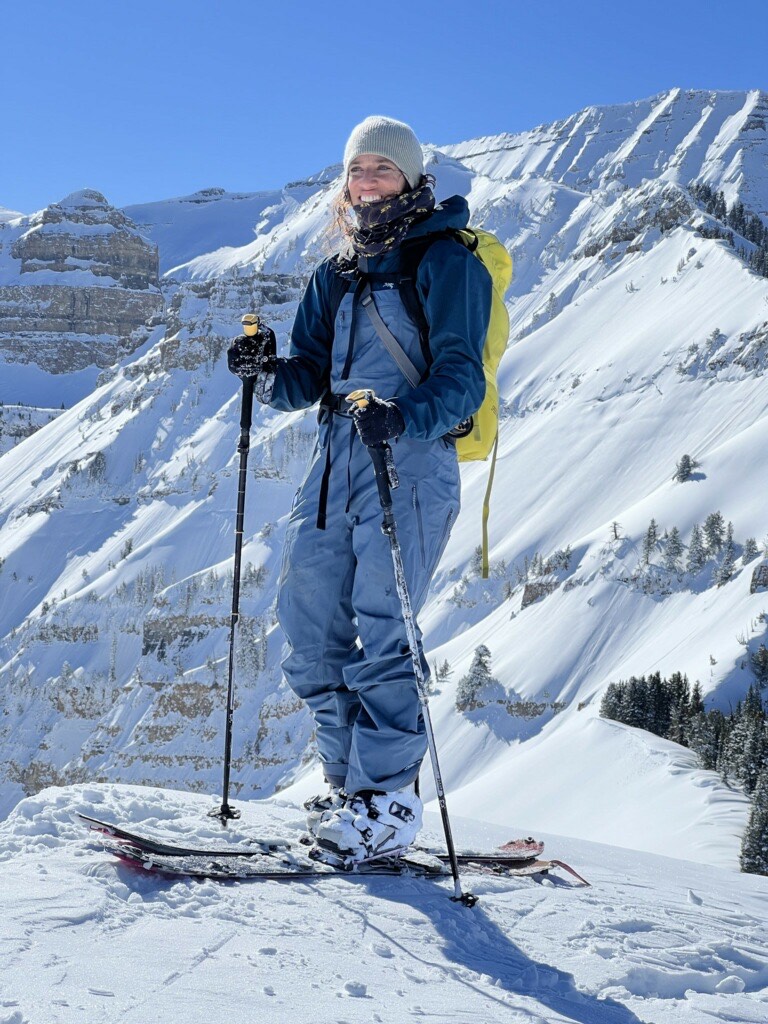
Split boarding has gained popularity over the last decade, with an increasing number of people venturing out to explore the backcountry. However, the numbers comparing men and women who participate in split boarding have not grown equally within the sport. Men grossly outnumber women in the backcountry and in split boarding, which prompts the question: why? Are there obstacles, challenges, or gender constraints that women face in the sport of split boarding?
Penelope Freedman is a professional athlete who has been competing in big mountain trail events for 15 years and has been an avid snowboarder for over 20 years as well. She has a huge passion for the outdoors, nature, and the environment, and started split boarding six years ago. Freedman believes that split boarding enhances her appreciation and respect for nature, allowing her the opportunity to enjoy the beauty and power that can only be felt by standing on top of a mountain.
Freedman is passionate about the sport of split boarding and envisions a day when more women are involved and participate in the sport. To Freedman, split boarding provides an avenue through which women can build confidence in themselves, develop deep relationships with one another, and support each other. Split boarding is not a solo sport and requires an experienced team to safely and successfully reach the summit of a mountain. Freedman said,
“Split boarders rely on one another. Partners are in intense situations and have to make quick decisions.” Those situations develop relationships and a strong bond with people.”
If more women are going to get involved in split boarding these are very important factors to consider. According to the National Ski Areas Association, women accounted for only 37% of total skier visits in the 2021-22 season. The numbers decrease for people who participated in snowboarding, which accounted for only 27.9% of the 6.69 million skier visits in the same study. Those numbers are something Freeman wishes would increase in the future by saying, “I only split board with men, and I would like to see more women get involved.”
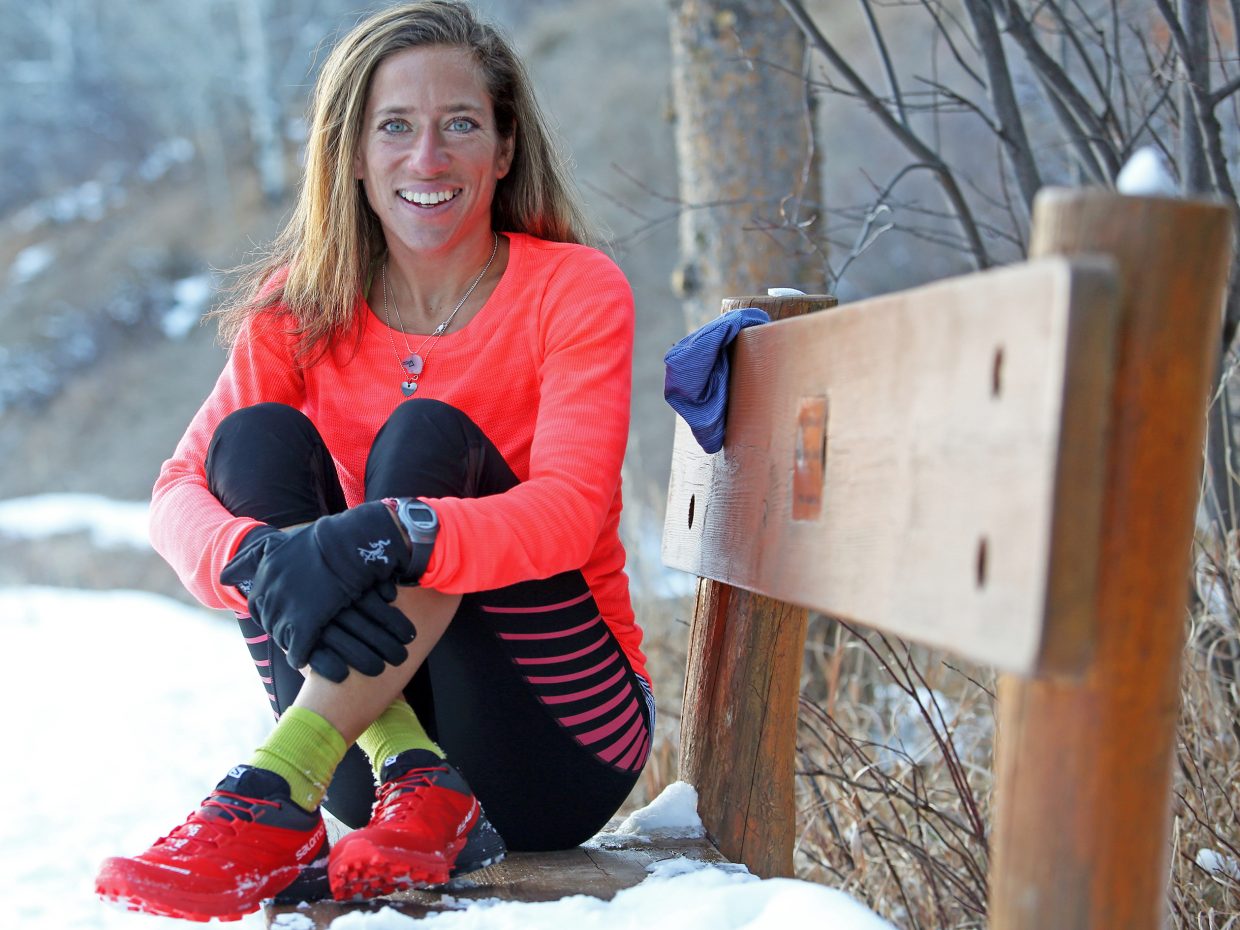
Split boarding began in 1991, when a man from Utah named Brett Kobernik took a snowboard that was cut in half vertically, added some “skins” to it, and invented the first DIY split board. Throughout the 1990s, there were few manufacturers producing split boards in the industry. The sport gained popularity when Jeremy Jones, a world-renowned snowboarder, made it famous in 2010 with the release of his short film, Deeper. Today, almost every major ski manufacturer in the industry offers a split board for riders to choose from.
What exactly is a split board? A split board is a modified snowboard that has been cut in half longways to form two “skis.” The ski industry has expanded greatly in backcountry activities over the last decade, and most major manufacturers offer a selection of split boards. The split board acts as two different tools when participating in this extreme sport. When you separate the split board, it forms two “skis” which are utilized to climb to the top of the mountain. Once a person has reached the summit, they put the two “skis” back together to form a split board to ride down the mountain like a snowboard.
The number of people participating in split boarding has become increasingly popular over the last decade, with more winter enthusiasts opting to leave traditional resorts behind and venture into the backcountry instead. The extreme sport essentially combines snowboarding and mountaineering to create a unique experience. In split boarding, there are no lifts, trams, or gondolas to take you to the top of the mountain, because in this sport, it is up to the individual to use their skills, knowledge, and strength to ascend the mountain successfully.
How does a person climb to the top of the mountain using a split board? Split boarders attach a “skin” to the bottom of their two skis, which provides traction when climbing to the top of the mountain. A skin is a piece of material that is made of nylon, mohair, or a combination of both. The skin is attached to the bottom of the ski and provides traction when a person steps down on the skis, and also allows a person to glide when moving up the mountain. The skins are attached to the bottom of the skis by tip loops, tail clips, and special glue.
How does split boarding incorporate the two individual sports of snowboarding and mountaineering? The snowboarding aspect of split boarding is not as simple as it may sound at first. Split boarders are not riding down a groomed slope or a regulated course. Instead, they are traversing down lines, mitigating avalanche hazards, and navigating down no-fall zones. It defines what makes the backcountry so appealing to people looking to escape the beaten path, crowded resorts, and pre-made features that have become all too familiar to skiers and riders.
The mountaineering aspect comes into direct play with the simple fact that a person must ascend the mountain by climbing it. To some, it might not sound easy, and the thought of climbing a mountain may be a little daunting at first. Split boarding requires a lot of physical strength, but more importantly, it also requires specific skills, knowledge, and mental strength. Athletes should receive training in all safety and avalanche courses before hitting the backcountry. As stated earlier, there are no marked courses, no safety personnel, and a lot of important decisions which has to be made to reach the summit safely.
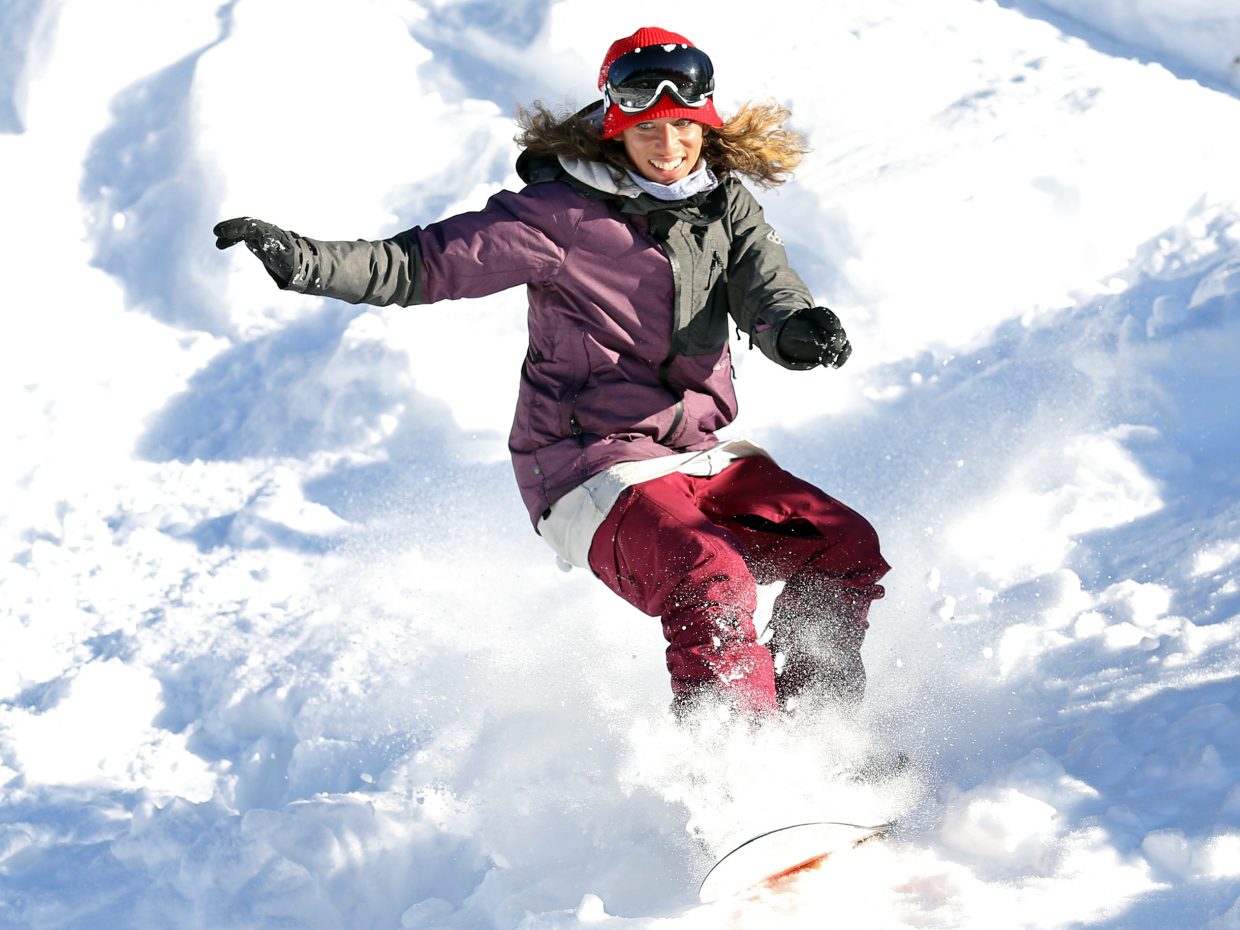
Just like any other winter activity, a list of equipment is required for someone to begin participating in split boarding. Split boarding requires specific equipment and gear necessary for a successful and safe experience on the mountain. The first piece of equipment is purchasing a split board, which ranges from $500 to $1,800 brand new. Prices greatly vary on the different types of boards out there; however, you can usually find a used board for a reasonable price if you are just getting started in the sport.
When someone first gets involved in any winter sport, it is essential to consider the initial start-up costs involved. It is also important that a person researches and shops around for the proper equipment needed to split board safely. A person does not need to have the most expensive equipment in the industry to participate in and enjoy split boarding. Freedman said that if people research and look for deals, they could purchase a split board and the basic gear for approximately $2,000 to get into the sport. That cost is very comparable to other winter activities such as skiing and snowboarding.
Split boarding requires a person to purchase additional equipment that most resort riders typically do not need. Climbing a mountain is something that a person must think about carefully before doing, and it is also essential to choose the correct equipment required to climb a mountain as well. Safety is paramount, and a person must be well-trained in using their equipment and have confidence and trust in their gear to be successful in this sport. The basic equipment for split boarding includes the following: split board, bindings, boots, skins, collapsible poles, backcountry pack, avalanche beacon, probe, shovel, and emergency kit. Other basic outerwear gear for participating in this winter activity includes a jacket, liners, gloves, goggles, and a helmet.
Some people may think split boarding is very similar to snowboarding at a resort; however, there are so many different aspects a split boarder must consider that a snowboarder does not. As stated earlier, there is no lift system to take you to the top of the hill. Split boarders are required to navigate up the mountain using their knowledge, skills, and training to reach the summit. “It is not like a resort, there are so many different types of conditions and terrain,” Freedman said. There are also dangers and hazards which are inherent to split boarding, which are not as typical at most resorts, such as avalanches and no fall zones.
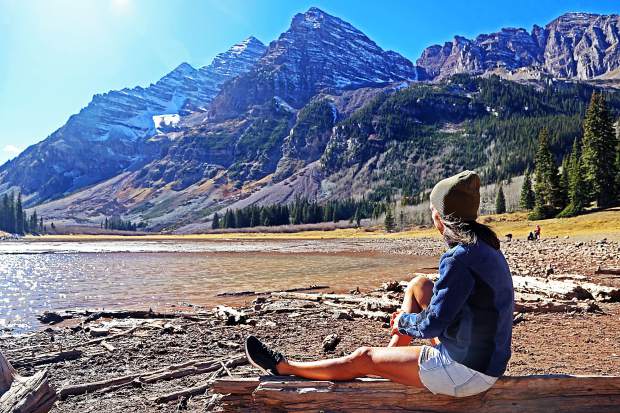
There is an appeal to split boarding that a resort cannot duplicate and would be difficult to find anywhere else, except in the backcountry. That appeal comes in many different forms, but it always returns to nature and the building of self-confidence. Being on top of a mountain surrounded by nature is something that most winter enthusiasts desire. “I love being in the mountains. It brings joy, beauty, and respect for nature,” Freedman said. While some would argue that it also happens while skiing and snowboarding, it is important to remember that a splitboarder operates in a mountain environment where most resort skiers never venture.
The love of the mountains is something that inspires many people to take trips and visit each year. It is something that Freedman is deeply fond of. The backcountry is known for its dangers, and there are powerful lessons that can be learned from Mother Nature. Freedman believes that a learning environment can provide a platform in which a person can overcome adversity and become more confident in themselves. “Time spent in the mountains is really powerful and builds confidence,” Freedman said. That confidence not only resides on the mountain but can also carry over to other things as well.
Participating in sports and staying active is not only beneficial for the body, but studies have also shown that it is good for the mind. According to the Centers for Disease Control and Prevention, “Being physically active can improve your brain health, help manage weight, reduce the risk of disease, strengthen bones and muscles, and improve your ability to do everyday activities.” Freedman is a proponent of mental health and believes facing adversity and difficulties on the mountain improves a person’s ability to face challenges off the mountain.
The mountain and nature provide split boarders many challenging decisions, adversity, and risks that they must overcome to be successful. Those challenges provide valuable lessons that can enhance a person’s ability to manage their personal or professional life successfully. It is not every day that someone is faced with decisions that could directly result in immediate bodily harm or even death. Facing those choices and developing plans to mitigate the dangers on the mountain can be applied to someone’s daily life.
“The backcountry has dangerous situations and makes you respect nature more. Lessons learned from nature are stronger and more powerful and help you get better and stronger, ” Freedman said.
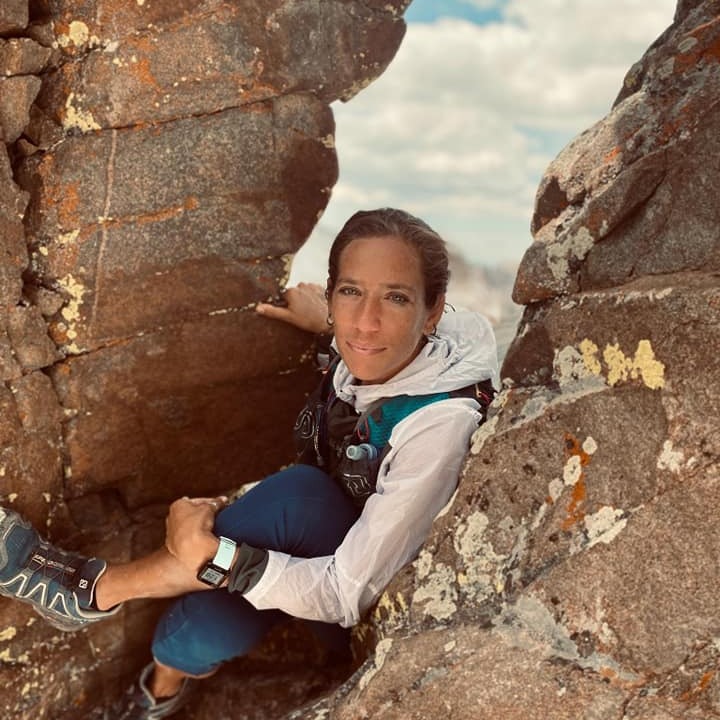
There have always been “growing pains” when a new sport or activity is introduced to the mainstream; however, split boarding has seen a huge increase in participants in a relatively short amount of time. According to a 2020-21 study by the Ski Industries of America (SIA), the number of participants hitting the backcountry increased by 90% in one year. The study added, “There were approximately 2.2 million participants who considered themselves Alpine touring participants in that period.” Those numbers are encouraging, and according to the SIA study, “Growth was seen in all age groups, genders, education levels, incomes, and races/ethnicities.” With the increase in the number of people hitting the backcountry, it should also be more appealing to female athletes to give split boarding a chance.
It is easy to find a group of all men on the mountain; however, it is tough to find a group in the backcountry that is comprised solely of women. The inception of backcountry skiing was fueled by men who saw the challenge of ascending a mountain and finding that one extreme line to ski back down. Some may say that the ego, pride, and competitiveness of men cause them to do things they would not normally do when surrounded by other men.
In 2021, a study from the University of Sydney stated: “We found men were much more likely than women to be at the extreme ends of the behavioral spectrum, either acting very selfishly or very altruistically, very trusting or very distrusting, very fair or very unfair, very risky or very risk averse and were either very short-term or very long-term focused.
According to Associate Professor Stefan Volk, from the University of Sydney Business School, “this alternative theory suggests that the socially constructed patriarchy in many societies has managed to constrain women and the opportunity for them to display the same level of variability as men.”
On the contrary, a group of women think about things differently when making decisions on the mountain, according to Freedman. “There is more of a team concept and collaboration between women when making decisions or suggesting ideas while in the backcountry, ” she said. “Women relate and think about things differently. There is discussion and supporting each other.”
There has been a perception that women seem to be outvoted or looked down upon when they are with a group of men in the backcountry. However, the same could also be true of other sports, such as basketball, soccer, golf, or any other activity in which women also compete. The truth about ascending an 8,000-foot-high mountain is that someone’s physical abilities can only get you so far; the most challenging part about climbing a mountain is being mentally tough.
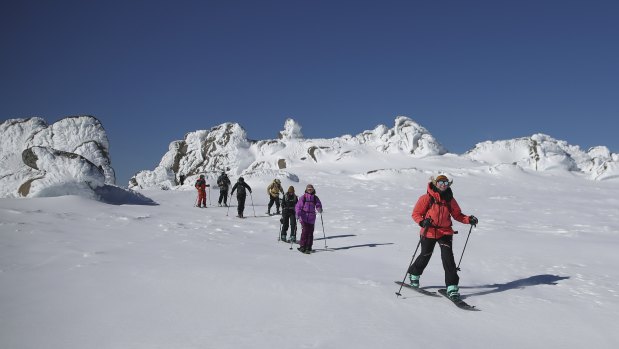
Freedman discussed several key factors that could help increase the interest and involvement of women in split boarding. Strong leadership by women within the sport could help create an environment that would be more inviting to other women split boarders.
“If professional women in the backcountry could get more exposure, they could create mentorship programs and sponsorships which could help elevate the costs of getting into the sport,” Freedman said.
There are numerous ideas throughout the industry that could encourage more women to hit the backcountry and splitboard. According to Freedman, things that would help more women get involved include, but are not limited to, women-specific groups, backcountry safety clinics led by women, a safe place to practice skills, or a learning environment where a woman does not feel like she will be ridiculed.
Freedman, who usually only has the opportunity to split board with men, said that sometimes it feels as though women do not have a voice in the backcountry. Freedman is referring to decisions made on the mountain by some men who would make decisions on their own or with other men, leaving a woman’s decision out of play. She also stated that sometimes there is a lot of pressure for women to keep up on the mountain, which makes them feel hesitant about being part of the decision-making process.
There is a place for women in split boarding and the backcountry, and the introduction of women-centered groups throughout North America is proof. Revelstoke Mountain Resort in British Columbia has been at the forefront of women’s leadership and participation throughout the industry. They have a much higher rate of women who are members of the Association of Canadian Mountain Guides than the national average. They are also strong proponents for women in all aspects of winter activities throughout their community. Other groups throughout North America are specifically geared toward women in the sport, such as SheJumps, Keen’s Rippin’ Chix, Her Turn, Women’s Ultimate 4 Lessons, and Leave the Boys Behind.
Being physically strong does not equate to being mentally strong, and making sound decisions on the mountain is vital to the safety of the group. “Men are competitive with each other. Women relate and think about things differently,” Freedman said. She also added, “Women tend to discuss and support each other better than men, which relates to good decision-making.” The end result that Freedman desires is for women to feel confident and respected in the backcountry based on their knowledge, skills, and abilities.
The backcountry is a unique place where everyone can develop genuine respect and admiration for nature while still learning, growing, and becoming more confident in themselves. As long as women like Freedman are willing to face the challenges of the mountain while overcoming gender inequalities, the future of split boarding is going to be amazing. After all, man or woman, who does not love being on the mountain, enjoying nature, and having fun?
Alan Bistro be like “No one is gatekeeping women” then proceeds to gatekeep women. Is it possible that something is still an issue for society even if it isn’t an issue for you personally? Your whole comment reads like satire, sit this one out.
I dont understand the issue. Men and women like different things so if the proportions are uneven thats ok. no one is gatekeeping women from split-boarding. For example women like to go to the lavender festival much more than men so the proportions are off and thats ok!
Seems over excessive to write this much on an issue that isn’t really an issue for society.